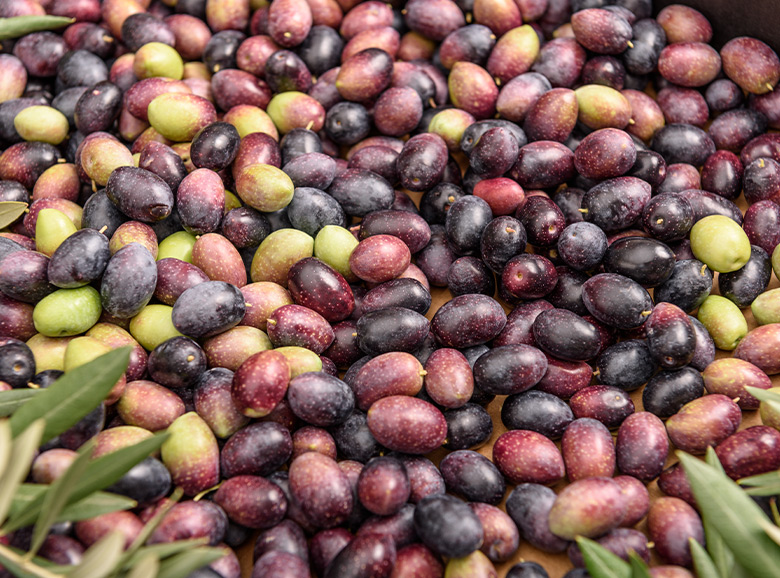THE PRODUCTION PROCESS
The processing cycle of OLIVE OIL MANUFACTURING is divided into six essential phases:
- Defoliation
- Washing
- Crushing or milling
- Kneading
- Extraction
- Separation

Upon arrival at the oil mill, the olives, before proceeding to the phase of oil extraction, are subjected to the called pre-working phases: defoliation and washing. The defoliator, through fans and rotating axes, eliminates the branches and the leaves. The washing machine, through the use of drinking water, removes dirt residues or other impurities. At this point the olives are ready for the phases: milling, kneading, extraction and separation.
Themillings is the first working production step, during it the olives are crushed by means of special machines until obtain a homogeneous paste that emanates an intense and pleasant aroma, reminiscent of the fruit; characteristic aroma of the oil mill.
The pressing or milling methods used in our oil mill are optional and you can choose between:
– The traditional method, which is gradually disappearing, is based on the use of mullers or rather stone millstones which, with their weight, crush the olives to obtain a paste; hence the term milling.
– The modern method, on the other hand, uses the crusher, with the advantage of quickly crushing a large quantity of olives, obtaining a more homogeneous paste and minimizing the contact of the pasta with oxygen, a method called Frangitura.
The kneading consists of a slow and continuous mixing of the olive paste inside a large stainless-steel bowl called “gramola”. This is a fundamental and delicate step that allows to combine the Oil molecules so that facilitate the extraction phase.
During the kneading phase, the temperature of the Oil paste does not exceed 27 °C to preserve the organoleptic characteristics, properties and qualities of the oil.
Theextraction is a fundamental step of the manufacturing process: from the olive pasta obtained in the previous step we proceed to the separation of three components. The extraction system used exploits the different specific weight of the individual components. The paste is placed in a large centrifuge called Decanter which separates pomace, oil and vegetation water through a high speed.
At the end of these operations, the oil obtained is still edible, but cloudy because it has air bubbles, fragments of pulp and water residues inside it.
The separation The separation is the last step of the manufacturing process of Extra Virgin Olive Oil. In it is used a vertical centrifugal separator that divide the oil from the water and the last residues and impurities.
The Extra Virgin Olive Oil is left to decant in natural way in special storage containers at controlled temperature environment… Now, the product is ready to be packaged and sold directly to our customer.

